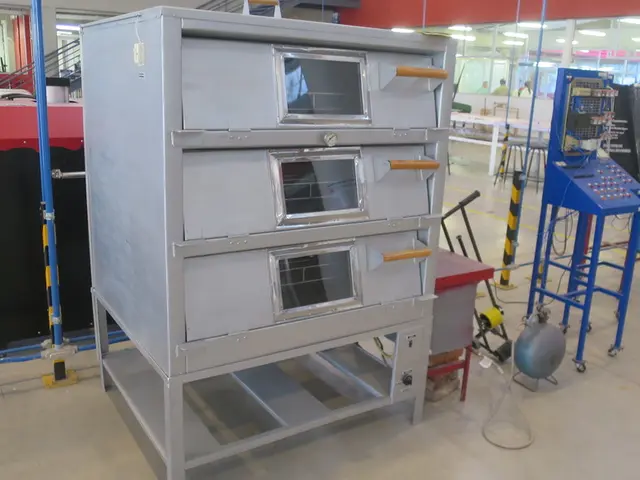Strategic Analysis: Why Your Workforce Engagement Approach is Falling Short and Recommended Solutions for 2025
Diana Lowe, head of Illuminated Leadership, aids businesses in boosting employee engagement through Positive Psychology and Life Coaching.
In the early days of my career, fresh from university and plunged into a financial firm in London, I found myself stuck at a desk, suffocating under mountains of spreadsheets. Each day, I grappled with making sense of the data, growing increasingly irritated. The thought of staring at rows and rows of seemingly insignificant figures consumed me. Worse still, my manager frequently criticized my data entry mistakes during team meetings, publicly embarrassing me.
For years, I attended work feeling deeply disheartened and defeated. I longed for each working day to end, wishing to be anyplace else. Despite achieving my dream of living as an expat in London and working in finance, I was hopelessly out of sync, detached and miserable. In desperation, I turned to cigarettes to momentarily escape the tedium of the spreadsheets.
Looking back, both the firm and I made grave mistakes. The company hired me based on an impressive resume and personality, assuming I would either sink or swim, yet the reality was more akin to doggy paddling just to keep above water. They had no tools or processes to evaluate whether I was suited for the role or how to help me succeed.
As for me, I was a novice in the workforce with little understanding of my strengths or what type of work stirred my passion. Within the company, only the elite executives appeared genuinely engaged; the rest of us were either apathetic or completely indifferent. It was a vicious cycle, pushing me further into dissatisfaction. Regrettably, this predicament is fairly common.
Employee engagement plays a key role in an organization's success. However, many HR and business leaders might not fully comprehend the internal fuel sources that ignite genuine engagement. Recognizing these intrinsic motivators is crucial for fostering a dedicated and committed workforce in 2025 and beyond.
Since then, I've dedicated myself to studying methods to maintain employee engagement in organizations. As I pursued my master's in positive psychology, I discovered the internal drivers of employee engagement. Whether you're an employer or an employee struggling with engagement, learning about these four internal drivers can alter your perception of your role and even transform your employee engagement.
Employee engagement transcends mere job satisfaction; it encompasses the emotional and psychological investment employees hold in their work and organization. By identifying and cultivating the internal drivers of engagement, you can promote greater performance, reduce turnover and sculpt a more lively workplace culture.
Internal Drivers Of Employee Engagement
In their book, Emotional Fortitude and Beyond, writers Fred Luthans and Carolyn M. Youssef-Morgan explore the four internal drivers of employee engagement. Their research emphasizes the creation of favorable work environments by nurturing the internal drivers of employee engagement.
Emotional Fortitude, or EmoFort, is a collection of positive psychological qualities that contribute to individuals' success and well-being at work. The four primary components are hope, self-confidence, resilience and optimism, often referred to as HOPE. Hope demands believing that you can forge paths to your goals and maintain dedication to achieving them. Self-confidence entails having faith in your prowess to conquer challenges and triumph. Resilience involves rebounding from setbacks and maintaining strength under pressure. Optimism consists of anticipating good outcomes in the future and focusing on positives.
Through mentorship and coaching programs, employees can continually hone their skills and talents, bolstering their success and overall well-being. The allure of Emotional Fortitude is that it can be tailored to accommodate each individual, showcasing their unique strengths.
Strategies To Boost Employee Engagement In 2025
Decades of research reveal that elevating Emotional Fortitude in employees and teams enhances performance, resilience, and engagement. As you embark on 2025, consider these ways to cultivate your own workplace HOPE warriors.
Encouraging Hope
As a leader, champion opportunities for "pathway thinking." Encourage individuals to brainstorm various avenues to achieve their goals, fostering ingenuity and adaptability in problem-solving. Utilize engaging tools such as mind maps or Legos.
Fostering Self-Confidence
Implement the evidence-based strategy of mentorship and coaching programs, as suggested by Luthans and Youssef-Morgan. Pairing less seasoned team members with experienced mentors promotes growth and development, benefiting both the staff and the organization.
Nurturing Resilience
Resilience goes beyond getting back on your feet after falling; it is about learning and adapting while enduring adversity so that when you rise, you advance. Therefore, resilience training empowers employees with practical techniques like mindfulness, stress management, and cognitive restructuring to navigate challenges more effectively and maintain emotional balance.
Integrating mindful moments into meetings or proactive stress-relief measures during problem-solving sessions can help remind employees of their capacity to bounce back.
Cultivating Optimism
Leaders can be more proactive in fostering a solution-focused mentality. It seems simple, but by shifting the focus to forward-thinking, solution-oriented conversations rather than dwelling on problems, you create an environment where employees are energized by uncovering solutions instead of being weighed down by obstacles. By encouraging a proactive mindset, teams can identify opportunities and take concrete steps towards progress.
By selecting a strategy and consistently implementing it, you can watch your employees' engagement soar. It may even surprise you.
Maybe you're currently experiencing a sense of disconnection or are overseeing a group of individuals lacking in drive and enthusiasm. Recognizing and tackling the underlying triggers of staff engagement allows you to institute tactics that align with their inherent motivations. Employing this method can lead not only to enhanced personal satisfaction but also foster corporate advancement within the evolving professional milieu of 2025.
Are you eligible for the Exclusive Coaching Advisory Board?*
In her capacity as the head of Illuminated Leadership, Diana Lowe might find it beneficial to discuss the case of the financial firm and its struggling employee with her team, as their expertise in Positive Psychology and Life Coaching could offer valuable insights and solutions.
As Diana Lowe delves deeper into her research on maintaining employee engagement, she may consider incorporating the personal experiences and struggles discussed in this text as potential case studies to further emphasize the importance of fostering Emotional Fortitude in the workplace.







